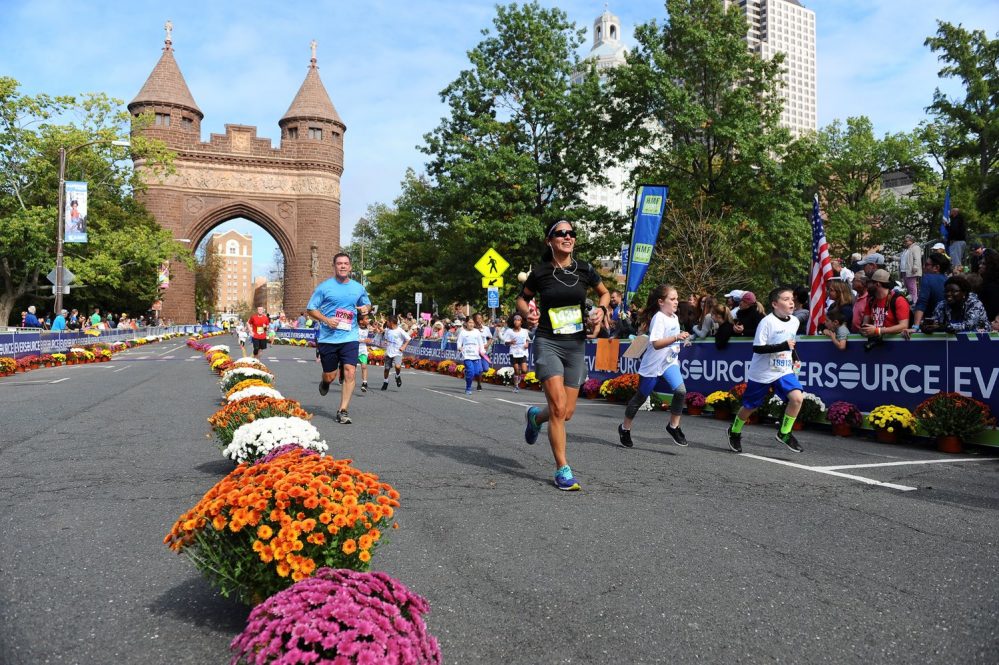It was a terrifying moment when a group of students from the College of Agriculture, Health and Natural Resources heard the announcer shout “Medic! Medic! Medic!” at the finish line of the Hartford Marathon this October.
A man had collapsed and was experiencing cardiac arrest just feet from the finish line.
As this emergency unfolded, students in the EMT program in the Department of Allied Health Sciences, Neil Komma, Heather Laffan, Vy Nguyen, Madeline “Maddy” Richardson, Mikha Shrestha, and Steven Trinh, jumped into action.
“It was interesting to learn about how to do all this stuff in class,” Komma says. “But then when it was happening, I was shocked. I froze for a couple seconds.”
Mikha Shrestha had the headset connected to the main medical tent and immediately called for backup.
“As calmly and coolly as I could, I called for help from the emergency tent,” Shrestha says.
Richardson and Trinh ran to the medical tent while Nguyen called the medical director, Stanley Chartoff, on her phone to make sure they knew there was an emergency happening.
“In that moment, the procedure went out the window,” Nguyen says.
The class’s teaching assistants and UConn alumnae, Sofia Martone and Bruna Basso, began performing CPR while the main medical tent sent an automated external defibrillator, commonly called an AED, down to the finish line. The CPR was successful, and the runner was awake before the ambulance arrived. He has recovered from the attack, a rare outcome outside of hospital settings.
Even though the students were trained to respond to a heart attack before the event, the most common medical events at the marathon are dehydration and muscle cramps.
“It was pretty unexpected,” Trinh says. “We weren’t expecting a real-life scenario to happen in front of us.”
This experience highlighted the importance of communication and working as a team during an emergency situation for the students.
“The quick response from all of us and the general teamwork was crucial there,” Richardson says.
Once the emergency was handled, the students needed to get back to their posts as the rest of the runners came in.
“We learned that after a big traumatic event, you have to become cool and collected right away and get back to doing what you’re there for,” Laffan says.
After this event, the group spoke with the marathon’s medical staff to be better prepared for next year by employing procedures like having an AED at the finish line.
Every year, Chartoff and David Bailey, the EMS coordinator, organize the extensive safety and security measures for the marathon. This entails organizing 75 medical professionals, including doctors and EMTs, who are on staff throughout race day and setting up two medical tents, one at the finish line and the other in Bushnell Park.
Michael Zacchera, adjunct professor and director of the UConn’s EMT program says he is proud of how his students responded in this crisis.
“They did a great job,” Zacchera says, “To have a patient respond that quickly is amazing. I was really proud of them.”
Follow UConn CAHNR on social media



